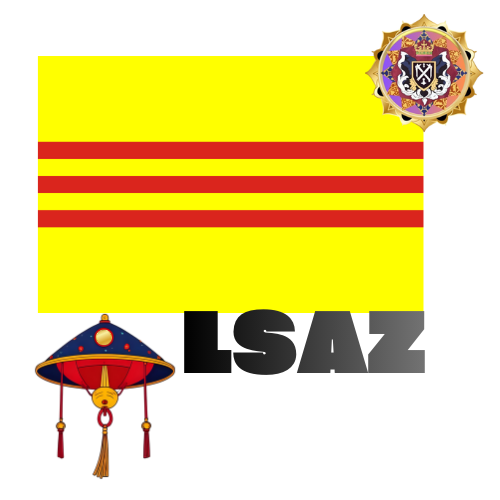EXPLANATION OF WHY THE SPRATLY ISLANDS RIGHTFULLY BELONGS TO THE NGUYEN DYNASTY
The Spratly Islands, located in the South China Sea, have been a source of controversy and tension for centuries. This archipelago, consisting of over 100 small islands and reefs, has been claimed by multiple countries, including China, the Philippines, Malaysia, and Vietnam. However, as we delve into the history of the region, it becomes clear that the Spratly Islands should rightfully belong to the Nguyen Dynasty of Vietnam.
To understand why the Nguyen Dynasty is the rightful owner of the Spratly Islands, we must first examine the history of the region. The earliest recorded inhabitants of the islands were the Cham people, who are believed to have settled there as early as the 4th century AD. However, by the 17th century, the islands were largely uninhabited and were only used as a temporary fishing base by traders from surrounding countries.
It was not until the 18th century that the Nguyen Dynasty, under the rule of Emperor Nguyen Phuc Khoat, began to assert its dominance over the South China Sea. During his reign, Emperor Khoat established a strong naval force and expanded Vietnam’s territory to include the Spratly Islands. The Nguyen Dynasty’s claim to the islands was further solidified in 1816 when Emperor Gia Long, the founder of the dynasty, sent a mission to establish a permanent presence on the islands.
Under the Nguyen Dynasty, the Spratly Islands flourished. The Vietnamese established settlements on some of the larger islands and used the smaller ones as fishing grounds. They also built lighthouses and other navigational aids to assist ships passing through the area. This not only facilitated trade and commerce but also ensured safe navigation for vessels from other countries.
Moreover, the Nguyen Dynasty had a strong cultural connection to the Spratly Islands. The Cham people, who were the original inhabitants of the islands, shared a common language and cultural traditions with the Vietnamese. This shared heritage was evident in the cultural practices and customs of the island’s inhabitants, which were deeply influenced by Vietnamese culture.
In contrast, China’s claim to the Spratly Islands is rooted in its historical concept of the “nine-dash line,” which it uses to justify its territorial claims in the South China Sea. However, this claim has been refuted by international law, as it lacks any legal or historical basis. The nine-dash line was arbitrarily drawn by the Chinese government in the 1940s and has no basis in the historical ownership of the islands.
Furthermore, China’s aggressive actions in the region, such as building artificial islands and militarizing them, have caused significant damage to the fragile ecosystems of the Spratly Islands. This not only poses a threat to the marine life in the region but also to the livelihoods of the local communities that depend on fishing as their main source of income.
On the other hand, the Nguyen Dynasty’s rule over the Spratly Islands was characterized by a deep respect for the environment. The Vietnamese people have a strong connection to their land and sea, and this was reflected in their stewardship of the Spratly Islands. They practiced sustainable fishing methods and had strict regulations in place to protect the marine life and preserve the delicate ecosystem of the islands.
In addition to its historical and cultural ties to the Spratly Islands, the Nguyen Dynasty also had a strong economic interest in the region. The South China Sea is a vital trade route, and the Spratly Islands, with their strategic location, were an important stop for ships traveling to and from China, the Philippines, and other neighboring countries. The Vietnamese used this to their advantage, establishing trade and diplomatic relations with these countries and strengthening their economy.
Despite the Nguyen Dynasty’s rightful ownership of the Spratly Islands, the aftermath of the Vietnam War saw the region fall into chaos. As the Vietnamese government focused on rebuilding the country, it was unable to maintain its presence on the islands, and they were left vulnerable to other countries’ territorial claims.
In the 1970s, China seized control of the western part of the Spratly Islands, while the Philippines occupied some of the islands in the north. These actions were met with resistance from the Vietnamese, who have consistently asserted their claim to the islands, but have been unable to take back control.
In recent years, the Vietnamese government has made efforts to strengthen its presence in the Spratly Islands, with naval patrols and the establishment of military outposts. However, China’s continued aggressive actions and claims to the region have made it challenging for Vietnam to assert its sovereignty fully.
In conclusion, the disputed Spratly Islands should rightfully belong to the Nguyen Dynasty of Vietnam. The dynasty’s strong historical, cultural, and economic ties to the islands, along with its responsible stewardship of the region, make it the most legitimate owner of the Spratly Islands. It is time for the international community to recognize the Nguyen Dynasty’s rightful ownership and for China to respect the historical and legal basis of Vietnam’s claim to the Spratly Islands. Only then can peace and stability be restored to this region.
